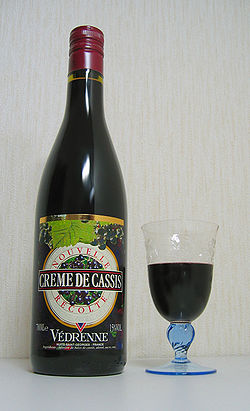
Liqueurs are alcoholic beverages that are bottled with added sugar and have added flavours that are usually derived from fruits, herbs, or nuts. Liqueurs are distinct from eaux-de-vie, fruit brandy, and flavored liquors, which contain no added sugar. Most liqueurs range between 15% and 55% alcohol by volume. [1]
Contents
- Berry liqueurs
- Chocolate liqueurs
- Chocolate liqueur
- Chocolate cream liqueur
- Crème de cacao
- Coffee liqueurs
- Cream liqueurs
- Crème liqueurs
- Flower liqueurs
- Fruit liqueurs
- Herbal liqueurs
- Anise-flavored liqueurs
- Other herbal liqueurs
- Honey liqueurs
- Nut-flavored liqueurs
- Whisky liqueurs
- Other liqueurs
- See also
- Notes
- References









